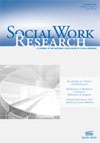 The Family and Medical Leave Act (FMLA) of 1993 has proven historic in providing job protection under certain conditions for qualified workers. Those who qualify under the FMLA are able to take unpaid time off from work when caring for a newborn or adopted child, sick spouse, child or parent or during their own illness, including pregnancy, without fear of job loss. However, critics have pointed out that the FMLA only covers about half of US workers, and disproportionately excludes low-income workers. Scholars and advocates point out that the FMLA does little to extend coverage to low-income women while bolstering job protection and leave-taking for professional workers, who often have the resources to weather a period of unpaid leave and, to some extent, already have employer-provided leave coverage.
The Family and Medical Leave Act (FMLA) of 1993 has proven historic in providing job protection under certain conditions for qualified workers. Those who qualify under the FMLA are able to take unpaid time off from work when caring for a newborn or adopted child, sick spouse, child or parent or during their own illness, including pregnancy, without fear of job loss. However, critics have pointed out that the FMLA only covers about half of US workers, and disproportionately excludes low-income workers. Scholars and advocates point out that the FMLA does little to extend coverage to low-income women while bolstering job protection and leave-taking for professional workers, who often have the resources to weather a period of unpaid leave and, to some extent, already have employer-provided leave coverage.
In response to the unpaid nature of FMLA, some states have considered paid family leave (PFL) policies. PFL programs replace wages during approved leave periods for qualified workers, with particular emphasis on mothers caring for a newborn child. PFL legislation has been enacted in such states as California, New Jersey and Washington.
Although states with PFL programs have been hailed for their efforts in providing supportive work-family policies, some scholars argue that policymakers have largely failed to consider the impact of PFL programs on those affected by the Personal Responsibility and Work Opportunity Reconciliation Act of 1996, also known as welfare reform. Welfare reform, funded by the federal Temporary Assistance for Needy Families (TANF) block grant, ended entitlement to cash assistance, required work as part of program participation, and explicitly aimed to move applicants and participants into the labor force.
Scholars have suggested that the US welfare system may act as a pseudo-leave program for women who rely on welfare during maternity-related leave. In fact, there is evidence that the share of the TANF caseload comprising single mothers who enter welfare after a recent birth has increased, and that poor, single mothers with infants have been reentering the labor market more quickly after the reform. Would PFL policies reduce reliance on TANF among new mothers?
In a recent article published in Social Work Research, Marci Ybarra, PhD, considers this question. The article considers the characteristics, pre- and post-entry employment patterns, and the substitution of the PFL benefits for cash welfare for a cohort of 293 new mother welfare participants who entered Wisconsin’s TANF program in the fall of 2006. Ybarra used the 2006 administrative data from Wisconsin on earnings and public assistance, as well as participation and benefit rules from three state PFL programs (California, New Jersey and Washington), to examine whether new-mother welfare participants use welfare during maternity leave from work, and if they would be better off with PFL benefits.
The study found that the overwhelming majority of TANF new mothers in Wisconsin were working prior to program entry and returned to work rather than remaining on welfare. Moreover, most of these new mothers would have received more benefits from welfare than from OFL. Notable percentages, however, would be as well off or better off with PFL benefits than with cash welfare: 32% under the California PFL, 24% under the New Jersey PFL, and almost half under the Washington PFL program.
Dr. Ybarra suggests that several areas of research should be considered in light of these findings. For instance, researchers should evaluate the effectiveness of current PFL programs in supporting the poorest families and should determine whether PFL participation leads to a reduction in TANF receipt (as thought by policymakers), and whether low-income PFL participants are accessing other means-tested programs. Moreover, it is unclear whether poor families are combining PFL and TANF benefits in PFL states. She suggests other areas of research, including comparisons of TANF new mothers to similar families without a recent birth.



